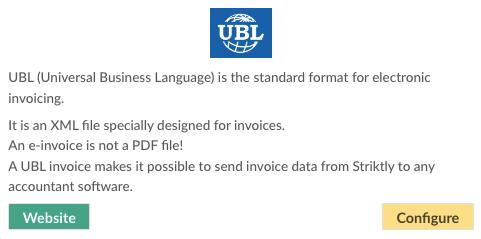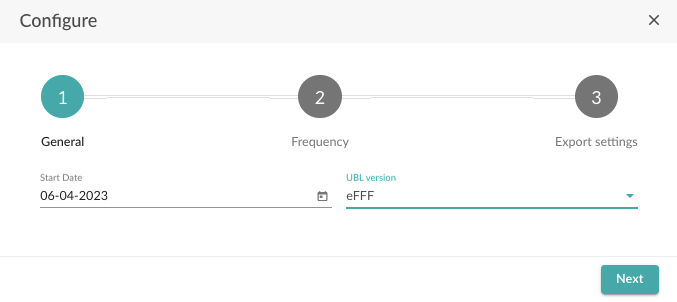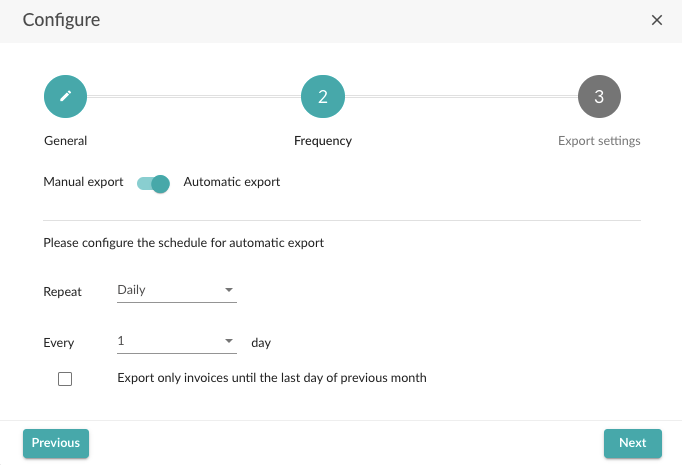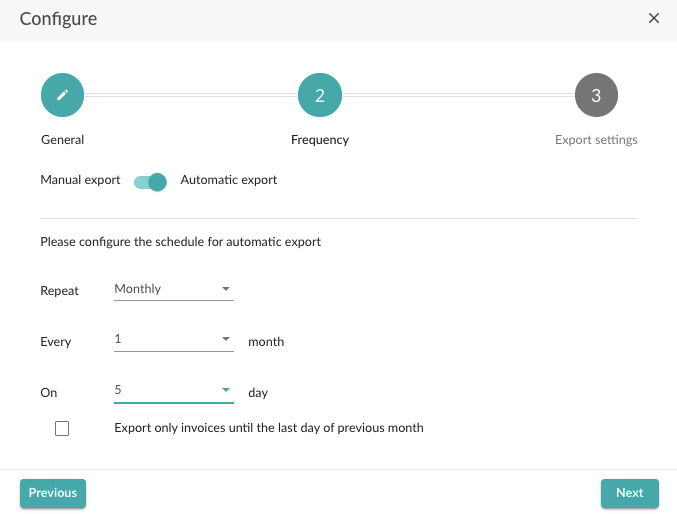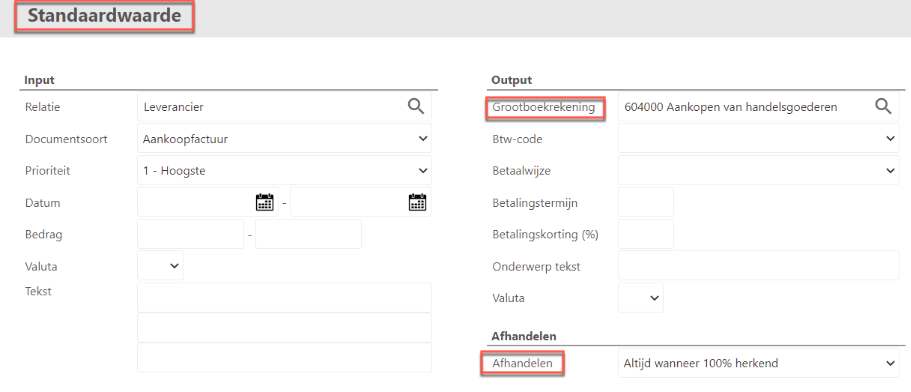How to link Go Getter with Yuki
In the article below, we will focus on how to link Go Getter with Yuki.
What do you need to successfully use this integration:
- The name of the accounting package used by your accountant
- The frequency at which the invoices should be sent
- The e-mail address the invoices should be sent to
Establish the connection:
- Log in to the admin panel and go to the "Integrations" tab.
- Navigate to UBL and select "Configure".
- On the next page, enter a start date (all invoices from this date onwards will be exported).
- In the second field, you select the UBL version supported by your accountant's software.
The UBL version is contingent upon the version supported by the accounting program that reads the UBLs. When in doubt, consult with either the accounting software manufacturer or your accountant.
- Select "Next".
On the next page, you can choose between manual or automatic export, we opt for automatic export.
- Adjust the frequency of exports. This can be daily, weekly or monthly.
- If you choose weekly or monthly, you can also specify the day on which the export should take place.
Most customers prefer scheduling a monthly export a few days into the new month, allowing for a comprehensive review by both you and your accountant.
It is important to note that filing VAT returns on a monthly basis is required, with a deadline on the 16th. To ensure adequate preparation time for your accountant, we recommend exporting data on the 5th day of the following month. Don't forget to select only the previous month's invoices before sending.
- After adjusting the settings, select "Next".
- Finally, fill in the e-mail address the invoices should be sent to.
- Select "Save".
If you have followed the steps correctly, your outbound invoices will now be automatically delivered to your accountant.
- After completion of the preceding steps, you will receive the following e-mail in your mailbox.
- Click on "Download" to download the UBL files in zip format.
- Open the file in order to extract the documents.
Efficiently streamline the UBL storage process for Yuki by correctly placing the files from the ZIP archive on your computer.
Import UBL files into Yuki:
- Yuki has the ability to identify UBL invoices and guarantees that the pdf and UBL are handled concurrently, preventing the generation of any duplicate invoices.
Yuki uses IDR technology to disassemble UBL invoices into individual invoice lines, and this technology is a standard feature within Yuki.
- If you receive UBL/e-fff invoices from a particular relation, you first need to configure your settings in Yuki.
Set up the document:
- Find the relation for which you receive UBL invoices and go to "Default values".
- On the following page, select "Comprehensive".
- Select "+ Document".
- Complete the details as described under "Document processing rules".
- Go the the tab "Processing" and select the desired option.
Selecting the "Always process automatically" option triggers automatic processing of documents linked to this relation. Alternatively, choosing the "Reliable history" option prompts Yuki to present the entries initially, similar to the process of regular OCR recognition.
In this initial stage, the primary account selected for the general ledger will be used for all records. If multiple general ledger accounts are included in the XML file, you can adjust how they are handled in step 2. Yuki software will automatically allocate the main account's funds to corresponding recognized lines. In case of inadequate data, Yuki will rely on its default general ledger accounts, as specified in the default values.
UBL line setup:
- Go the the tab "UBL item code", choose "is equal to" and enter the item code or description corresponding to the xml file.
- Choose the desired output (general ledger account and VAT type).
- Repeat step 2 until you have defined each noted general ledger account.
- From now on, the entered settings will apply.
To create lines on sales invoices that apply to all customers, proceed as follows:
- Navigate to "Relationships" in the Yuki environment.
- Select "Default values" in the menu on the left.
- Continue by repeating the steps as explained in the section "purchase invoices", but leave the "relationship" field blank for the sales invoice type.
Import UBL files:
- If you work with UBL invoices containing embedded PDFs, you are able to receive them by email, through Dropbox or Google Drive, or by manual upload. Get them at your admin email address or directly from your suppliers.
- If you work with UBL invoices of which the UBL invoice and the pdf file are separate attachments, you are able to receive them by email, through Dropbox or Google Drive, or by manual upload. Get them at your admin email address or directly from your suppliers.
- You can also choose to automatically upload the UBL invoices into Yuki using either the Sales web service integration or Peppol network.
Note that there are no available screenshots in English of the above software package.

